Stocks finished the week of August 11 lower as rates and the US dollar continued to climb. There isn’t expected to be much economic data this week, with retail sales being the highlight on August 15.
However, this week will be an options expiration week, likely meaning that options levels will be the dominant force. But once OPEX passes, volatility is likely to expand further next week.
The 4-week rolling rate of change for the S&P 500 shows how the market has been consolidating for some time, and this past week, we saw signs of the range diverging and widening out.

It was more obvious when looking at the Nasdaq 100. The Nasdaq 100 has seen its trading range getting smaller over the past several weeks.
However, just this past week, that trend broke sharply lower, which could serve as a sign that the recent trends of grinding higher on lower volatility have come to an end.

Perhaps more importantly, there was technical damage to the charts this week as the Nasdaq 100 gapped below an uptrend. The uptrend in the Nasdaq had been in place since the March 13 low.
This could signify a significant breakdown unless the Nasdaq can fill the gap created early this week.
Otherwise, this is a pretty bearish indication that the recent rally along the trend line is now over, and the index faces further declines, perhaps to the secondary trend line around 14,300.
Additionally, the index gapped below the 50-day moving average, another indication of a potential change in trend, trading below its 10-day exponential moving average for eight days, a sign that the short-term trend has turned bearish.
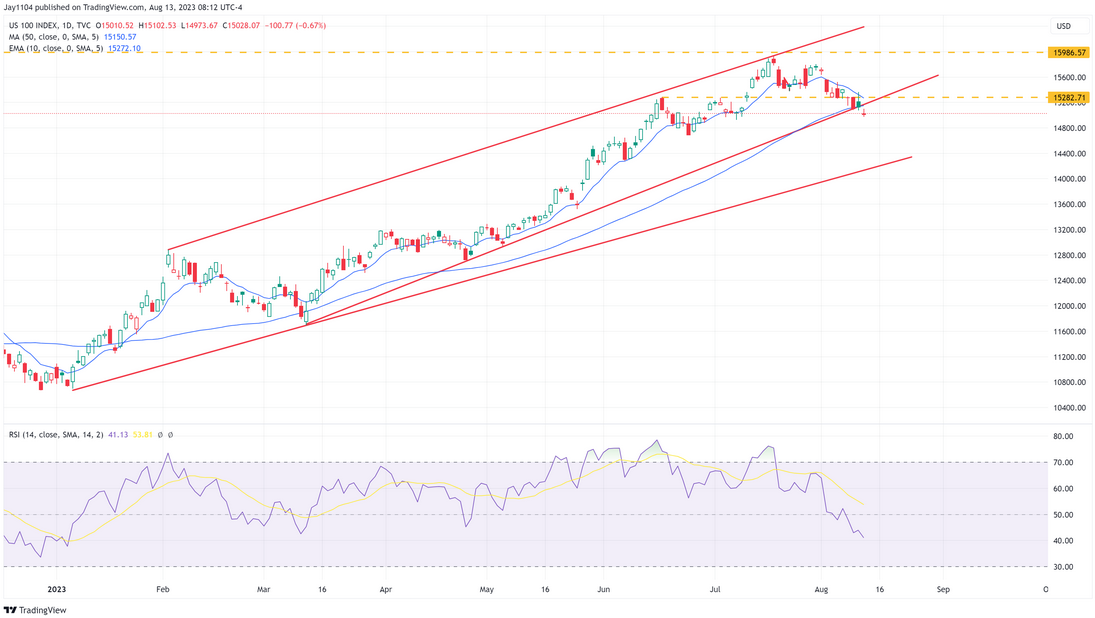
We have also witnessed something similar taking place in the XLK, which has gapped below its trend line, fallen below its 50-day moving average, and dropped below its 10-day exponential moving average.
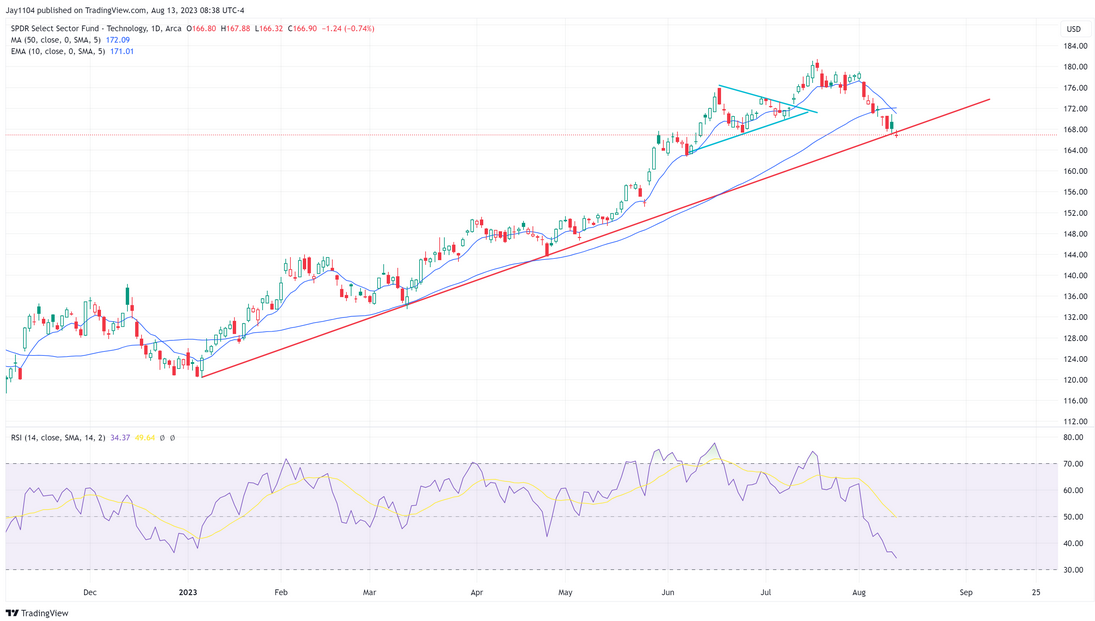
The damage on the S&P 500 isn’t as severe as the NDX or the XLK, but a short-term uptrend has been broken, and the index is trading below the 10-day exponential moving average.
The next significant test comes at the 50-day moving average and the longer-term trend line around 4,425, which would also fill the gap from July 10. A break at 4,425 sets up a drop to around 4,390, at which point things can really start to unwind.
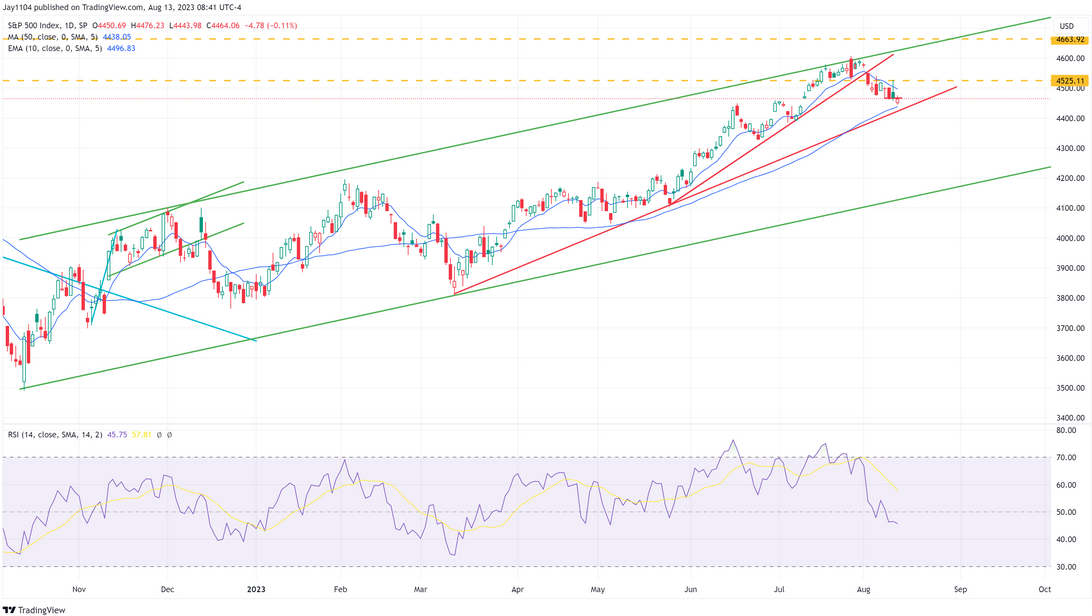
A drop to the low 4,400 levels in the S&P 500 could occur this week, given the gamma levels in the index, which suggest the put wall is at 4,400. The put wall is the level with the most put gamma. 
The dollar will have a significant influence on the market direction this week, as a strong dollar will tighten financial conditions, making a rally in the equity market unfavorable.
The dollar has surpassed significant resistance levels and has risen above a key short-term downtrend. The next major level of resistance for the dollar index is around 103.50.

Additionally, we are witnessing the 30-year rate breaking out and moving above a bull flag pattern. This could potentially propel the 30-year rate to a new cycle high, surpassing the October highs and reaching around 4.5%.
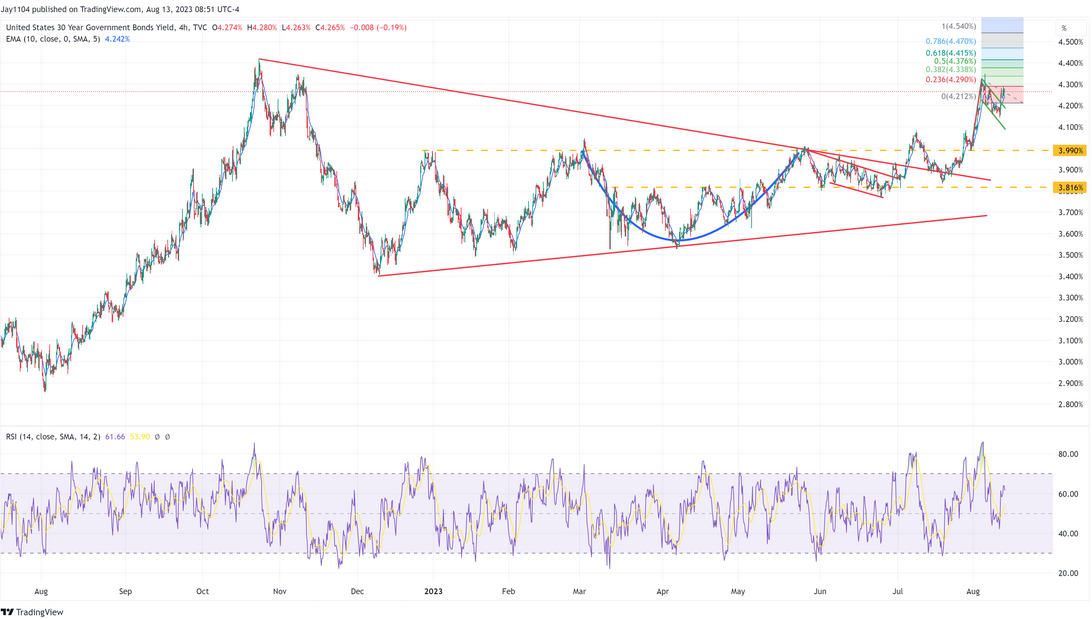
One reason rates on the back of the curve are likely to continue rising is that oil prices have been increasing despite the stronger dollar, thanks to the improved US economic outlook and production cuts.
This development has enabled oil to surpass a consolidation zone of around $83, which is now positioning oil to potentially climb to the low to mid-90s.
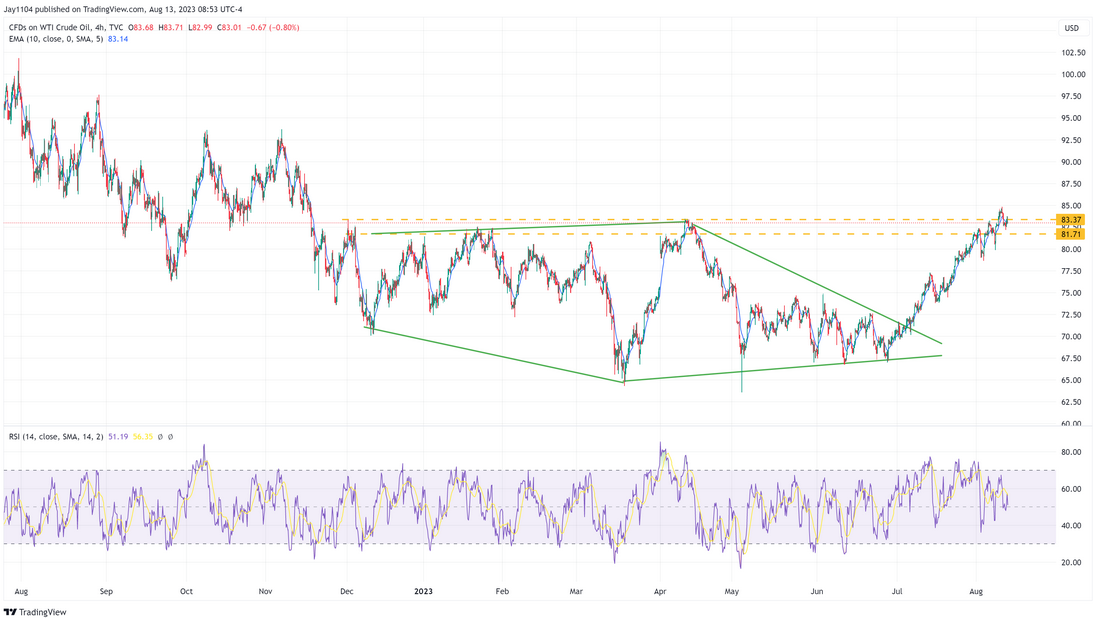
Higher oil prices are contributing to the increase in gasoline prices, with gasoline surpassing prior resistance levels around $2.90. Now, gasoline has a chance to push even higher, reaching around the $3.05 level.
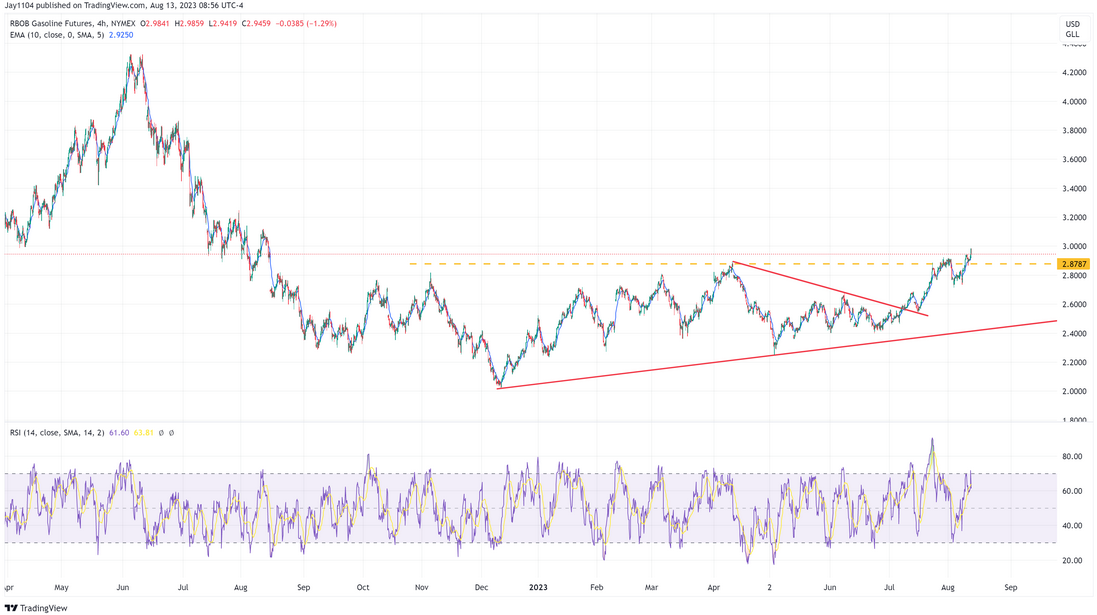
Additionally, there has been a weakness in markets like Taiwan, which seems to have formed a double-top pattern. It is currently resting on the neckline and positioned to break lower. There is an opportunity for that index to fill a gap of around 16,300 over the next several sessions.

Taiwan can serve as a leading indicator for the semiconductor sector in the US, as the VanEck Semiconductor ETF (NASDAQ:SMH) shows similar signs of struggle, falling out of a rising wedge pattern. It may have an opportunity to fill the gap of around $129
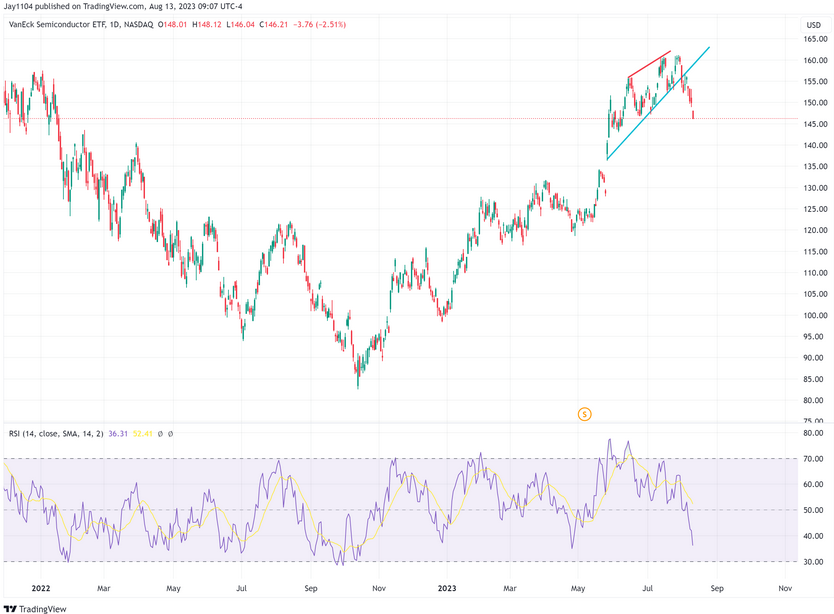
The semiconductor sector will play a crucial role in determining market direction, particularly if stocks like Nvidia (Nasdaq:NVDA) continue to experience further breakdowns. The “AI” mania appears to be losing momentum, and this will impact the sector.
The next level for Nvidia to potentially drop to after $400 is around $370. This possibility could be even more relevant if the rush order from Chinese internet giants turns out to be a one-and-done event, which may have overinflated Nvidia’s guidance for a single quarter.
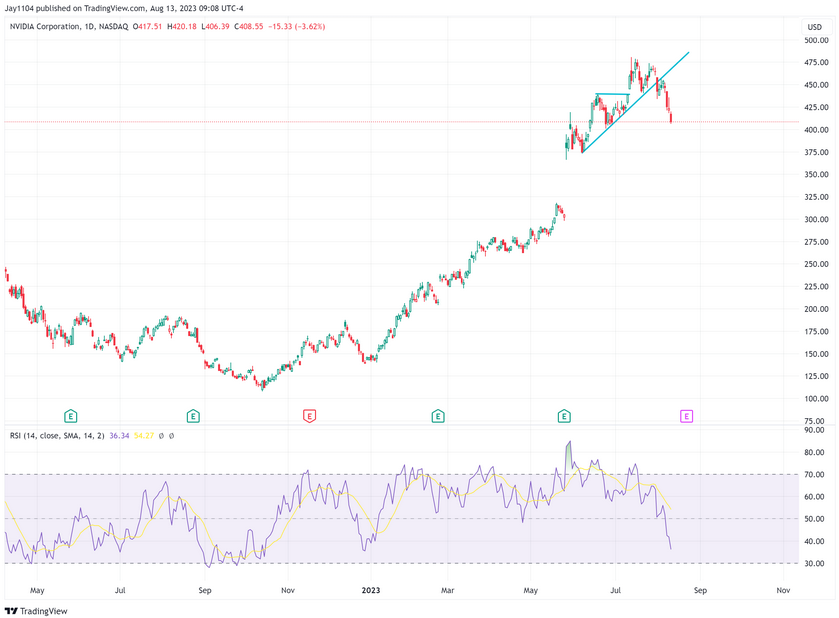
The weakness is also evident in AMD, which is currently resting on support at $107.50. If this support level breaks, it could potentially lead AMD on a path back to $80.
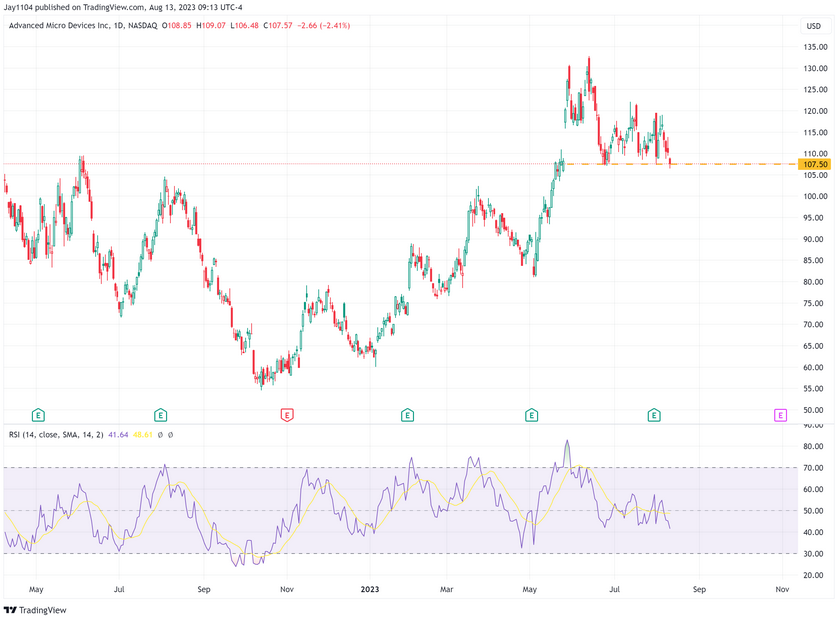
This week’s Free YOUTUBE video:
Good Luck this week
